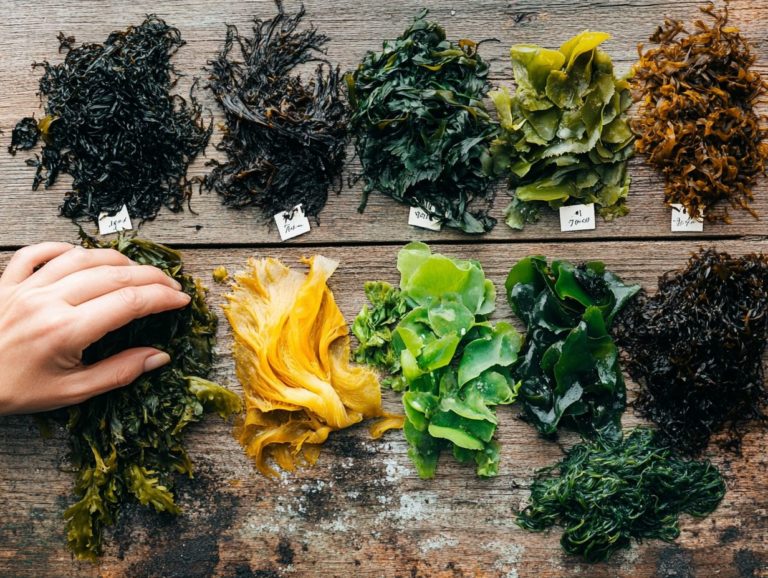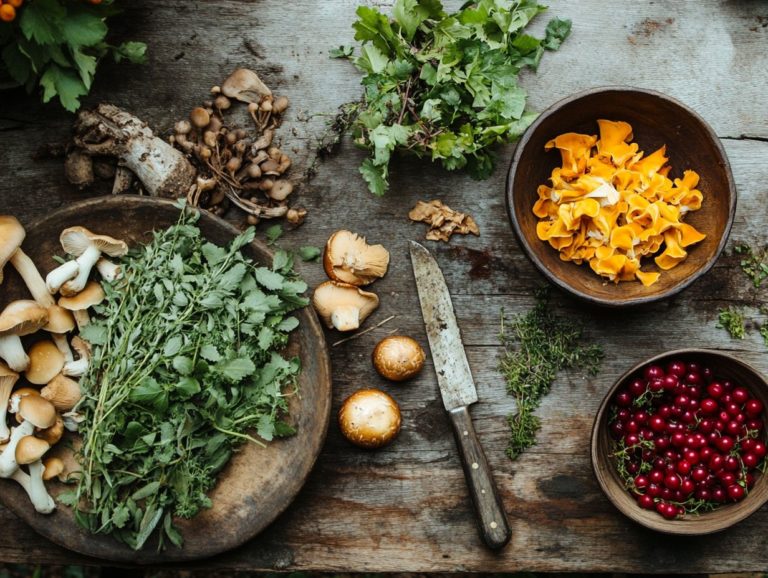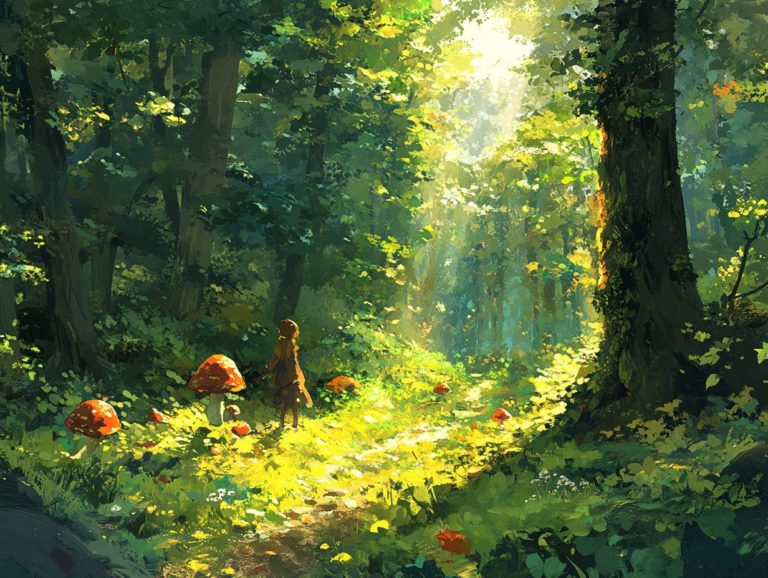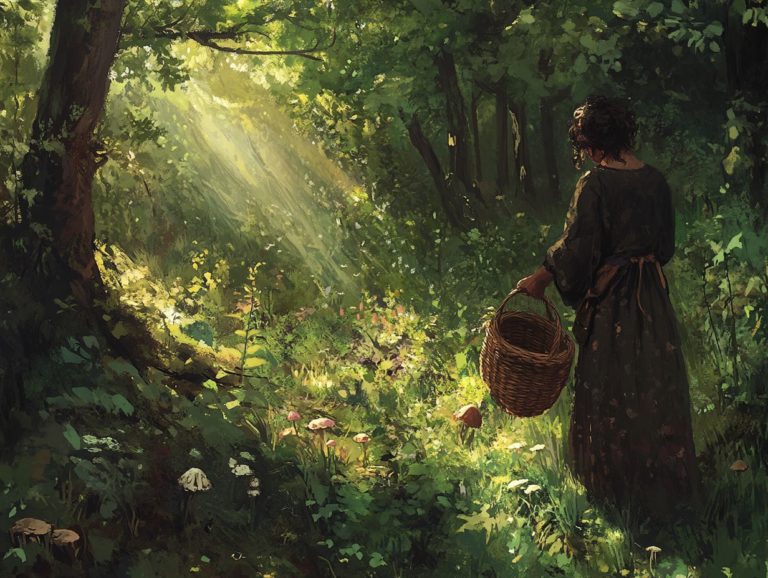How to Identify Wild Edibles by Region?
Have you ever strolled through a forest or park, contemplating whether the plants surrounding you might hold secrets beyond mere aesthetics?
Wild edibles present a remarkable opportunity to enhance your diet with nutritious and flavorful options, all sourced directly from nature’s bounty.
In this article, you will uncover the myriad benefits of integrating these natural treasures into your meals, learn how to identify edible plants according to your region, and explore essential safety precautions to keep in mind.
You will find helpful tips for preparing and cooking these delightful finds, empowering you to savor the wild s offerings with both confidence and style.
Immerse yourself in the captivating world of wild edibles and discover what nature has to offer!
Contents
- Key Takeaways:
- Benefits of Incorporating Wild Edibles into Your Diet
- Identifying Wild Edibles by Region
- Safety Precautions When Foraging for Wild Edibles
- Preparing and Cooking Wild Edibles
- Frequently Asked Questions
- What are some key tips for identifying wild edibles by region?
- What are some common mistakes people make when identifying wild edibles by region?
- How can I safely forage for wild edibles in my region?
- What are some popular wild edibles found in the Northeast region of the United States, including those traditionally used by Native Americans, like wild ramps and fiddlehead ferns?
- Are there any online resources for identifying wild edibles by region?
- Can I forage for wild edibles in urban areas?
Key Takeaways:
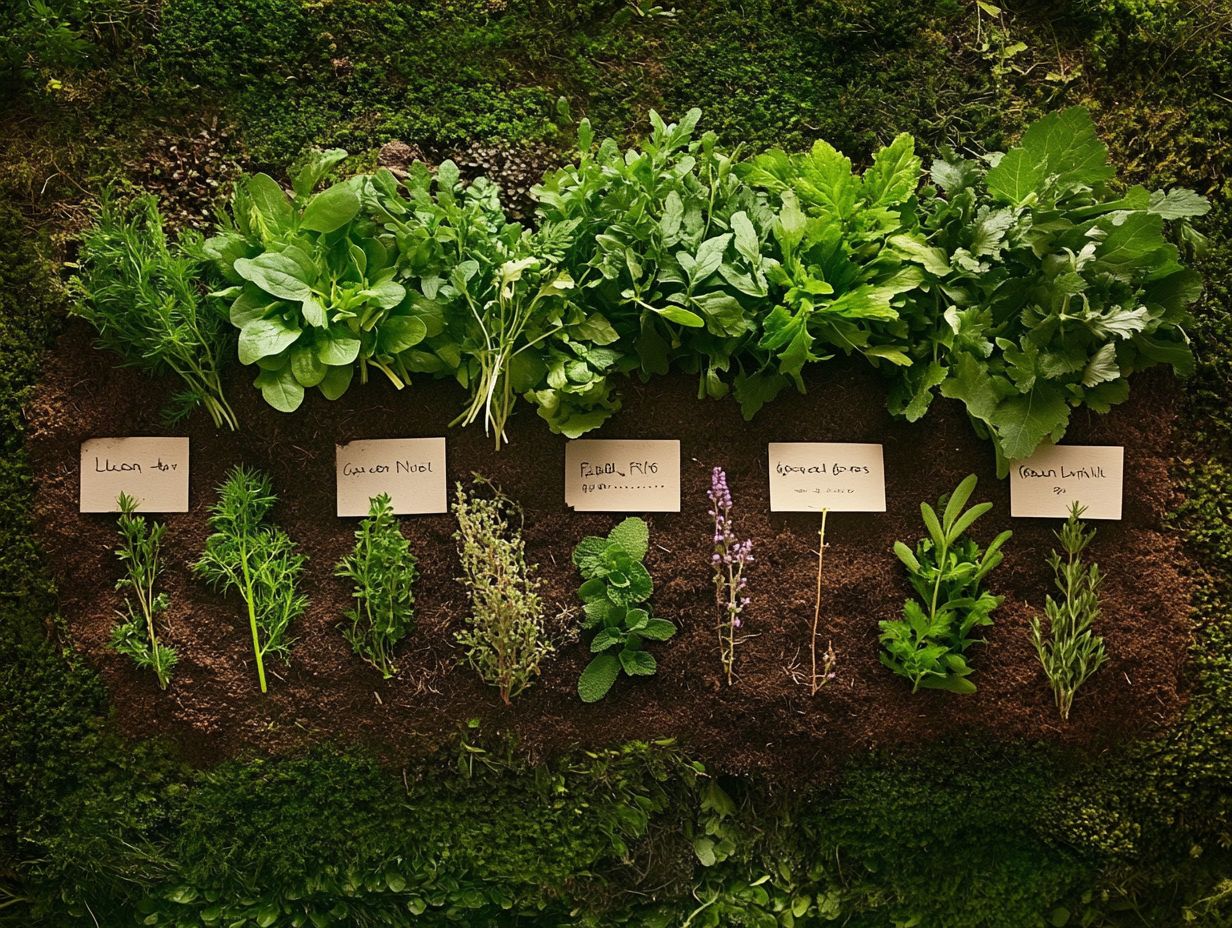
- Incorporating wild edibles into your diet can provide numerous nutritional and health benefits, such as increased nutrient intake and improved immune function.
- When identifying wild edibles by region, consider factors such as climate, soil, and plant appearance. Some common types of wild edibles by region include mushrooms in the Pacific Northwest and cacti in the Southwest.
- When foraging for wild edibles, always follow safety precautions such as properly identifying plants, avoiding contaminated areas, and preparing and cooking the edibles before consumption.
What are Wild Edibles?
Wild edibles represent a rich tapestry of plants found across various ecosystems, particularly in the lush forests of North America. By foraging for these nutritious foods, you not only connect with nature but also gain insights from seasoned edible plant experts. For those in the Northeast, identifying edible plants taps into the wisdom handed down through generations, including valuable lessons from figures like Andrew Townesmith.
Identifying wild edibles can be an exciting adventure that enriches your meals and equips you with important skills for finding food. Learning about edible plants in urban areas is becoming increasingly crucial in a world where food sustainability is a priority.
As you recognize common wild edibles like dandelions, wild garlic, and clover, you elevate your meals while championing environmental stewardship. To enhance your foraging knowledge, consider exploring the basics of foraging: identifying edibles. However, it’s crucial to exercise caution; distinguishing between safe and toxic plants is vital to avoid health risks.
Practical experience is key, and leveraging plant identification apps can be a fantastic way to support your journey, helping you make informed choices. This knowledge not only enhances your well-being but also deepens your appreciation for biodiversity and the ecosystems that nurture these edible gems.
Benefits of Incorporating Wild Edibles into Your Diet
Incorporating wild edibles into your diet presents a wealth of advantages, turning your meals into a vibrant, nutritious feast that elevates flavor while enhancing your overall health. These remarkable plants, many of which were once staples for Native Americans, are often abundant in vitamins, minerals, and antioxidants that can significantly improve your well-being.
This makes them an excellent choice for both vegetarians and those who prioritize healthy living.
Nutritional Value and Health Benefits
The nutritional value of wild edible plants is truly remarkable, offering essential vitamins, minerals, and antioxidants that play a significant role in achieving a balanced diet. Incorporating these plants into your meals is not just beneficial it s transformative. Take acorns and blackberries, for instance; they re not only delicious additions to your culinary repertoire but also come packed with health benefits, from boosting heart health to aiding digestion.
Delving deeper into the nutrient profiles of these plants reveals treasures like dandelion greens, which are rich in vitamin A essential for your vision and immune function. Similarly, those bright, tangy berries are bursting with vitamin C, vital for maintaining healthy skin and facilitating wound healing. There are also potassium-rich options like stinging nettle and lamb’s quarters, which support heart health by helping to regulate blood pressure. Don’t overlook the calcium-packed edible plants that contribute to strong bones and teeth.
By incorporating these nutrient-dense foods into your meals, you not only elevate the flavor but also embrace sustainability, demonstrating how foraging can lead to a richer, more health-conscious lifestyle.
Ready to explore the world of wild edibles? Start foraging today and enjoy the flavors and benefits of nature’s bounty!
Identifying Wild Edibles by Region
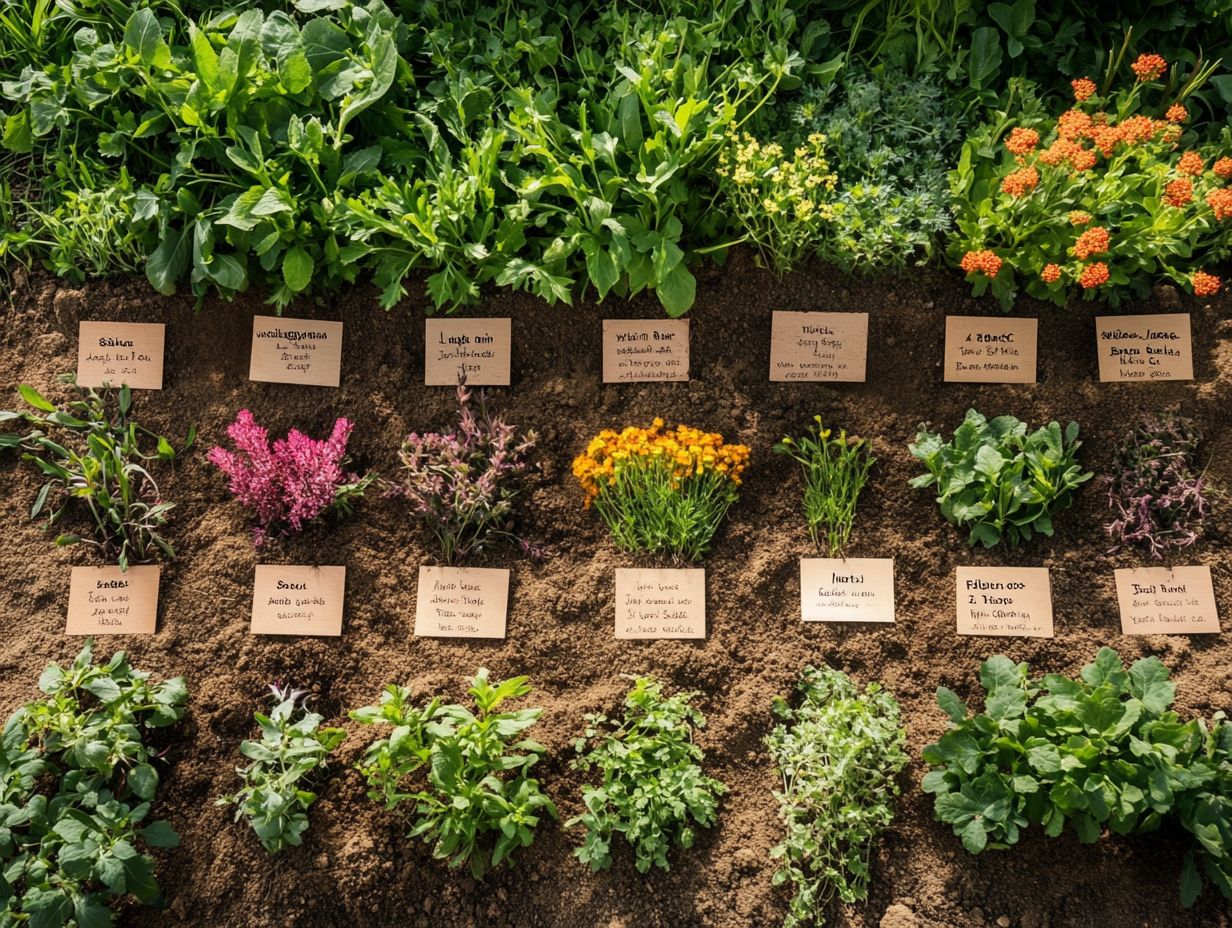
Identifying wild edibles by region is essential for you as a first-time forager. Resources on identifying edible plants in your region can safely and effectively enrich your diet with nutritious plants.
Familiarizing yourself with local flora, including common wild edibles found in North American forests, empowers you to distinguish between edible varieties and their poisonous counterparts. For a comprehensive resource, consider identifying wild edibles throughout the year, minimizing potential health risks.
Factors to Consider
When foraging for wild edibles, ensure accurate plant identification by consulting resources like top local edibles to forage in your area. Avoid toxic varieties to keep yourself safe.
If in doubt, use a simple test to confirm safety.
Pay attention to seasonality; plants bloom throughout the year.
Know the habitats where edible plants grow, like wetlands and woodlands.
Familiarizing yourself with distinguishing characteristics, such as leaf shape, flower color, and growth patterns, will elevate your foraging skills.
A simple test to check if a plant is safe to eat is crucial for confirming unfamiliar plants before you take a bite. Start by selecting a small piece of the plant, crushing it, and applying it to a patch of your skin to check for immediate reactions. If all goes well, consume a minimal amount and observe for any adverse effects. This careful approach can turn your foraging adventures into a safe and enjoyable journey, especially with a remarkable survival guide like Foraging Wild Edible Plants of North America.
Common Types of Wild Edibles by Region
Each region presents a unique array of edible plants for you to discover. If you’re interested in learning more, check out resources on how to start foraging for wild edibles, including workshops and community crowdsourcing platforms, which can help identify and utilize these wild delights.
From the sweet allure of black raspberries to the zesty bite of wood sorrel, understanding regional varieties enriches your foraging experience and contributes to local biodiversity.
As you explore these plants, uncover flavors and textures often overlooked in conventional cuisine. In the Pacific Northwest, wild huckleberries await as a delectable treat bursting with antioxidants. In the Midwest, you can find lamb’s quarters, celebrated for their impressive nutrient profile, including vitamins A and C. To ensure your foraging is safe, refer to the Identifying Safe Edibles: A Forager’s Guide for helpful tips.
Local organizations frequently host foraging workshops, giving you the chance to learn about these plants firsthand, including their culinary uses and guides to foraging. Crowdsourcing platforms let you share knowledge with fellow foragers, connecting you with others who share your passion for uncovering nature s hidden treasures.
Safety Precautions When Foraging for Wild Edibles
Safety precautions are essential when foraging for wild edibles. They allow you to enjoy these plants while minimizing the risk of consuming poisonous varieties.
Adhering to guidelines for safe foraging highlights the importance of proper identification, seeking education through workshops, and developing a robust understanding of the local flora.
By taking these steps, you can confidently explore the world of wild edibles with peace of mind.
So, get outside and start foraging safely!
Guidelines for Safe Foraging
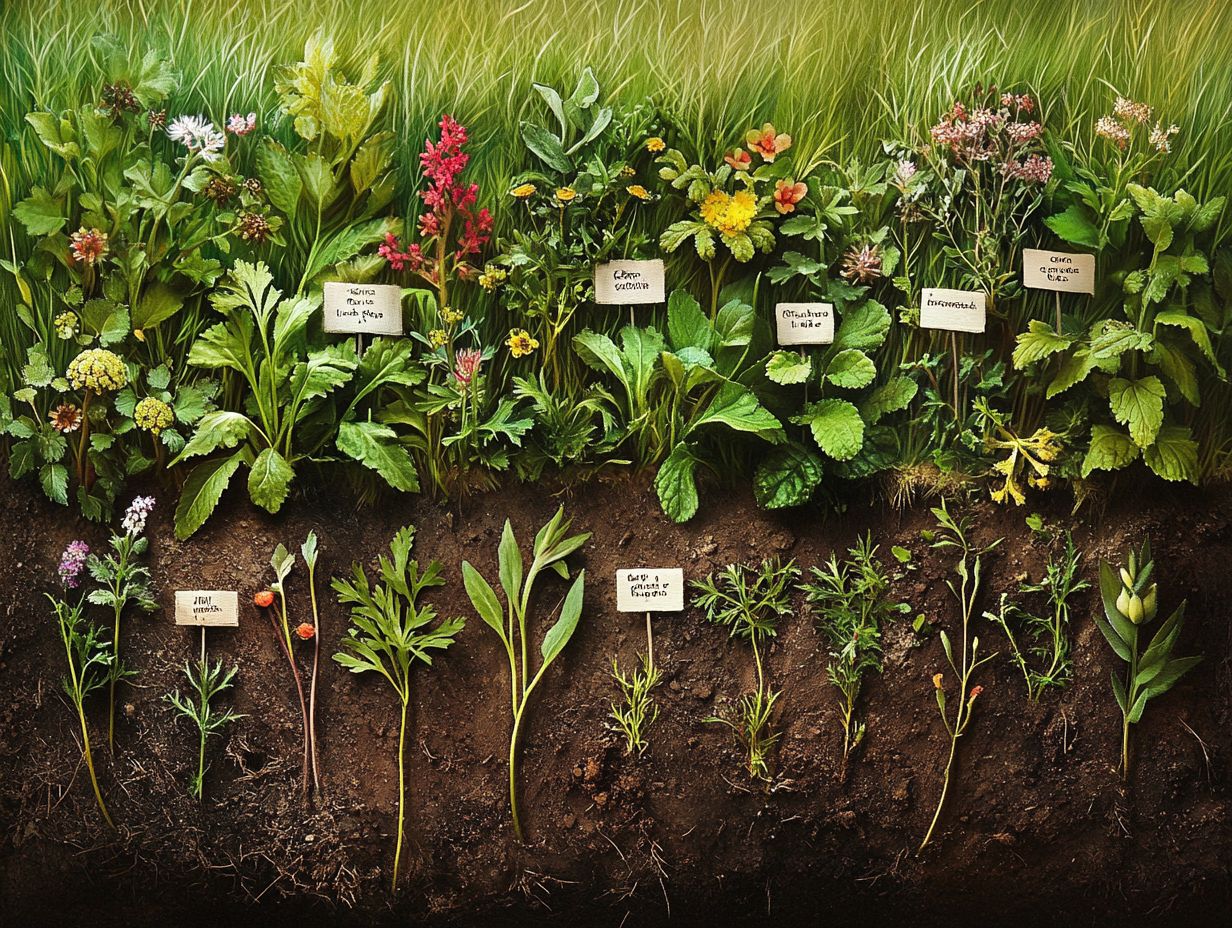
Guidelines for safe foraging empower you to confidently identify and harvest wild edibles that are safe to consume. This ensures you steer clear of poisonous plants that could pose a threat.
Using methods such as the universal edibility test a safe method to determine if a plant is edible and consulting reliable plant guides is essential for practicing responsible foraging. Recognizing the importance of ongoing education through plant guides in this field is crucial.
As you explore the natural world, develop a deep understanding of local flora, including seasonal variations and habitat specifics. This knowledge can significantly enhance your safety.
Consider participating in community workshops or connecting with seasoned foragers to gain invaluable hands-on experience. When employing the universal edibility test, be meticulous allow time for any reactions before taking that first bite. This careful approach keeps you informed and enriches your foraging adventures while minimizing the risks associated with misidentification.
Preparing and Cooking Wild Edibles
Transforming wild edibles into exquisite additions to your meals enhances your culinary journey while embracing the philosophy of foraging.
Mastering proper techniques is essential as it maximizes both flavor and nutritional value. This ensures your consumption is safe and enjoyable, offering a nutritious buffet of options.
Methods for Properly Preparing and Cooking Wild Edibles
Numerous methods for preparing and cooking wild edibles exist, each offering unique flavors and textures. These can beautifully enhance your vegetarian diet, especially through techniques like foraging for food in North American forests.
Techniques such as blanching, saut ing, or adding these plants to soups and salads can elevate their natural taste while preserving their nutritional benefits.
For example, blanching delicate greens like wild ramps can brighten their color and soften their flavor. This makes them a delightful addition to any dish.
Saut ing heartier leaves like dock or lambsquarters draws out their earthy notes, adding depth to your stir-fries. You can also use foraged mushrooms, such as black raspberry or Himalayan blackberries, in risottos or as savory toppings for pizzas and pastas, showcasing their rich umami flavor.
As you incorporate these nutrient-packed plants into your meals, such as chickweed and dandelion, don t hesitate to experiment with various seasoning blends or complementary ingredients. This ensures an exciting culinary adventure that celebrates the benefits of foraged foods while promoting a wholesome vegetarian lifestyle.
Subscribe for more foraging tips!
Frequently Asked Questions
What are some key tips for identifying wild edibles by region?
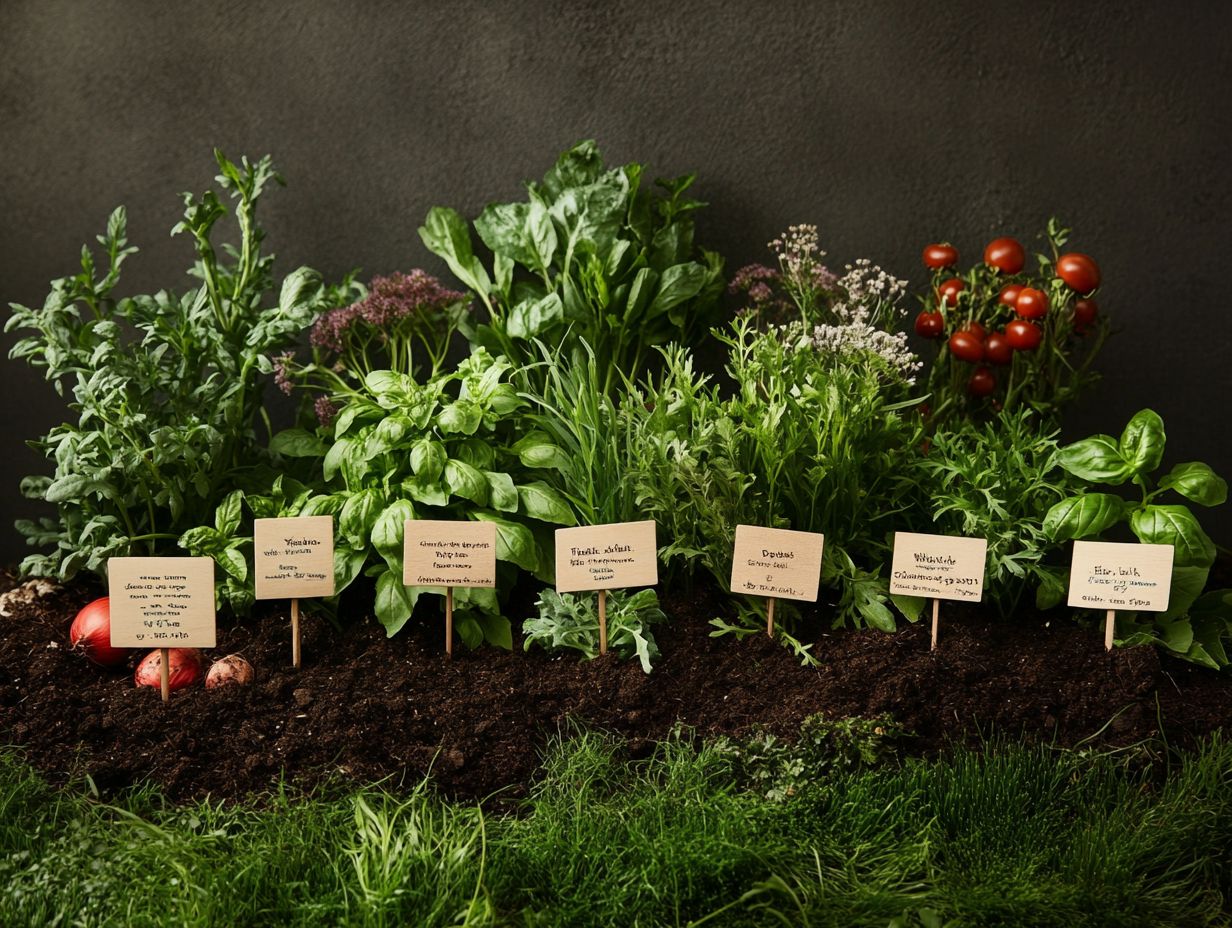
- Research the specific flora and fauna of the region.
- Learn to identify common edible plants.
- Know how to avoid poisonous plants.
- Seek guidance from experienced foragers in the area.
What are some common mistakes people make when identifying wild edibles by region?
Common mistakes include mistaking poisonous plants for edible ones, not properly identifying plants before consuming them, and failing to recognize edible varieties like plantago lanceolata and dead-nettle.
How can I safely forage for wild edibles in my region?
To safely forage for wild edibles, always properly identify any plants you plan to eat, such as pinyon pine or chickweed. Avoid areas that may have been sprayed with pesticides or other chemicals, and thoroughly wash and cook any wild edibles before consuming them.
Share your foraging experiences or questions in the comments below to foster community engagement!
What are some popular wild edibles found in the Northeast region of the United States, including those traditionally used by Native Americans, like wild ramps and fiddlehead ferns?
In the Northeast, popular wild edibles include morel mushrooms, ramps, and fiddlehead ferns. To learn more about these and other foraged treasures, check out this guide on how to spot edible plants in the wild. Wild berries like blueberries and blackberries are also found.
Are there any online resources for identifying wild edibles by region?
You can find many online resources to identify wild edibles in your local area by region. Look for books by Andrew Townesmith and Christopher Nyerges, like *Foraging Wild Edible Plants of North America*. Popular websites include EatTheWeeds.com, Foraging.com, and Wild Edibles.com.
Can I forage for wild edibles in urban areas?
You can forage for wild edibles in urban areas, including some inspired by The Hunger Games. However, be cautious! Urban areas can hide contaminants like pollution and pesticides. It is best to stick to areas that are known to have clean and safe foraging opportunities.
The thrill of foraging in nature awaits, but make sure to choose safe spots for your adventure!

